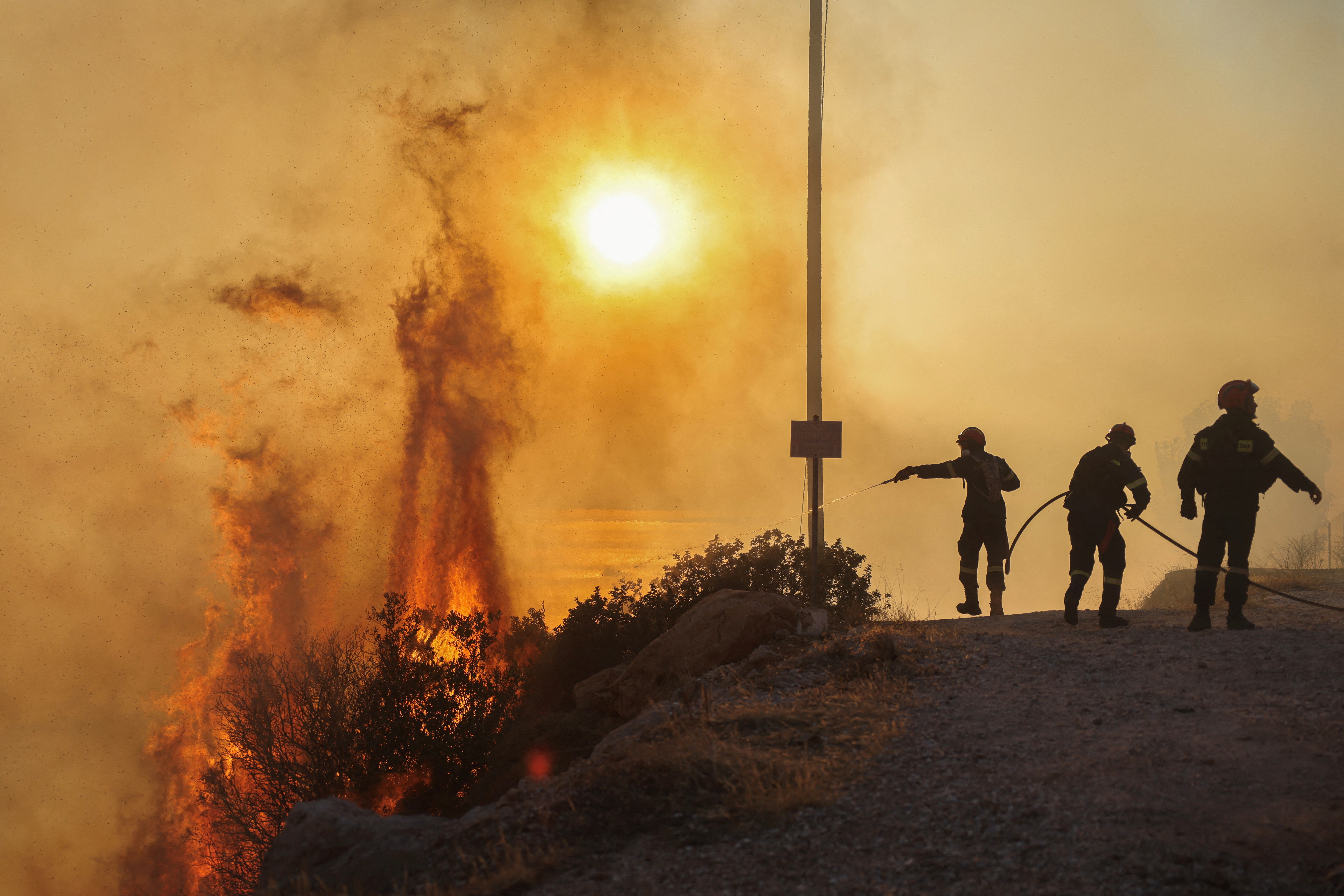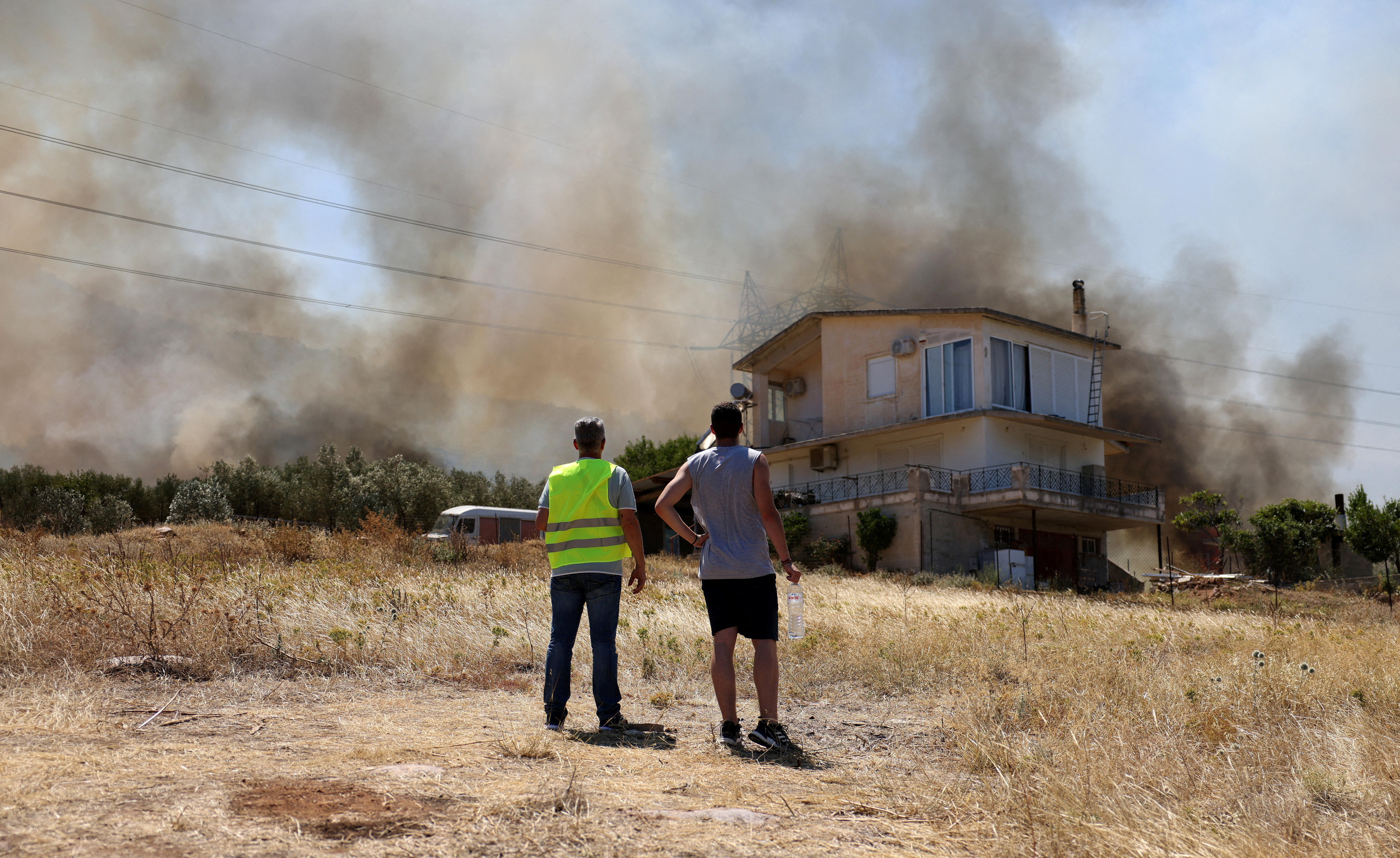Greece: 19,000 People Evacuated as Wildfire Wreaks Havoc, What’s Causing ‘Hell of Heat’ in Europe? – News18
The Greek island of Rhodes is facing an unprecedented wildfire crisis, with authorities evacuating approximately 19,000 people over six days. It marks the largest evacuation from a wildfire in the country’s history, highlighting the severity of the ongoing disaster.
As of Sunday, firefighting efforts involved 266 firefighters, 49 engines, five helicopters, and ten planes, including Greek, Turkish, and Croatian assets. However, the situation remains challenging due to the mountainous terrain and the unpredictability of winds, which are variable in Rhodes and other Greek islands.
Scorching Heat
Greece is experiencing scorching temperatures, with mercury soaring to 38 C (100 F) before midday on Sunday. The country has designated an exceptionally large area, including the eastern part of central and southern Greece, the islands of Evia and Rhodes, and significant portions of the southwest, as Category 5, signifying the highest risk of fire outbreaks. Additionally, another substantial area has been labeled as Category 4, indicating a very high risk.
Authorities have taken measures to provide accommodation for the evacuated individuals, including tourists, in hotels, gyms, and a conference center. A shipping company has even offered one of its ships for housing. Efforts are underway to reunite tourists with their tour operators, and Greece’s Ministry of Foreign Affairs is coordinating with embassies to assist those who may have left their travel documents behind during the evacuation.
Extreme Temperatures in the Capital and Interior
The capital, Athens, is expected to experience temperatures of 43 C (110 F) on Sunday, while the interior plains of central Greece may see temperatures reach a scorching 45 C (113 F).
The situation in Greece remains critical as authorities continue their efforts to combat the wildfires and ensure the safety of residents and visitors. With such extreme weather conditions and the ongoing threat of fire outbreaks, vigilance and coordinated responses are crucial to address the scale of this disaster.
What is Causing the Extreme Heat in Europe?
Europe is currently experiencing an extreme heatwave, characterized by record-breaking temperatures and prolonged periods of hot weather. Several factors have contributed to this heatwave, including climate change, the El Nino weather phenomenon, and the presence of high-pressure anticyclones. As a result, the region has witnessed scorching temperatures, posing various challenges and health risks to the population, as per a report by Al Jazeera.
Causes of the Heatwave
Climate Change: The World Meteorological Organization reported that climate change is a significant driver behind the extreme temperatures experienced in July. Greenhouse gas emissions from burning fossil fuels are the primary contributors to climate change, leading to more frequent and severe heatwaves globally.
El Nino: El Nino, a cyclical weather phenomenon that warms the Pacific Ocean, played a role in creating the hottest June on record. The combination of El Nino and climate change has exacerbated the heatwave conditions in Europe, the report says.
High-Pressure Anticyclones: High-pressure anticyclones, such as Cerberus and Charon, have been influencing the weather in Europe. These anticyclones are characterized by slow-moving winds and clear, warm conditions, which can trap heat and cause temperatures to soar.
The heatwave has brought scorching temperatures to various parts of Europe, with some regions experiencing temperatures above 45 degrees Celsius (113 degrees Fahrenheit). Such extreme heat poses health risks, especially for vulnerable populations, and can lead to heat-related illnesses and even fatalities.
The European Centre for Medium-Range Weather Forecasts predicts that the extreme temperatures are expected to persist until this Thursday before a less warm air mass moves in from the north. However, there is a possibility of another period of extreme heat at the beginning of the following week. If the high-pressure system remains undisturbed, Europe could continue to experience more episodes of extreme heat in the future, the report explains.
As climate change continues to influence weather patterns, heatwaves are likely to become more frequent, intense, and dangerous. Mitigating the impacts of such extreme weather events requires collective efforts to address climate change and implement strategies to protect communities from the escalating heat risks.
Associated Press contributed to this report
For all the latest world News Click Here



